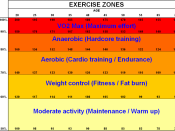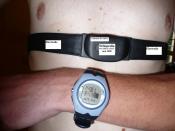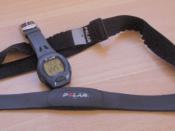Investigation in to the effect of caffeine concentrations on daphnia heart rate.
Concentration of the solution Test 1Test 2MeanResult of t-test
Measured in Beats Per Minute
0.63243923587.63
0.53083243167.63
0.33002442727.42
0.21602081846.79
011641601621.59
0.0 (water)144104124This is what they're compared to.
I will use the student t-test to compare the means of the mean of two different dilutions. It is used to compare two normally distributed sets of data
T-test allows us to assign a probability level to describe the likelihood that the null hypothesis is true.
This photo labels where the parts you should look out for in the daphnia
Results of experiment
Null hypothesis
÷There will be no significant effect on the heart rate of the daphnia as the caffeine concentration increases.
÷I have decided to use the student t-test as it allows the comparison of two different sets of data.
t-test
x1 - x2
t = --------------------
----------------
S12 + S22
n1 n2
Where
S1 = first sample
S2 = second sample
x = mean of sample
S2 = variance of sample (S on its own is the standard deviation of the sample.
Variance = square of standard deviation)
n = size of sample.
x
Formula of x = -----------
n
( x )2
x2 - --------
Formula of S2 = --------------------------
n - 1
Pond Water compared with 0.1% caffeine
Appendix of results
Caffeine concentrationtStandard deviationDegrees of freedomSignificance.
0.1 -Water1.7957.079Not significant
0.2 -Water 4.5761.979Significant
0.3 -Water6.7961.277Significant
0.4 -Water7.4261.982Significant
0.5 -Water7.6367.980Significant
÷At 80 degrees of freedom the 'critical value' (the 95% confidence limit) is 2.0 and the value of t (1.79) is less than this hence it is not significant. So any difference is due to chance.
÷Comparing water with 0.2 caffeine and above the value of t is greater than the critical value and so the results are significant...


